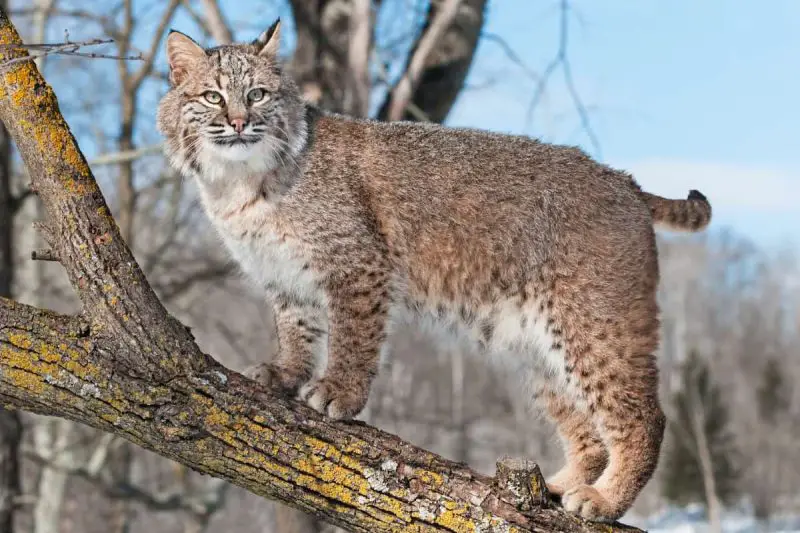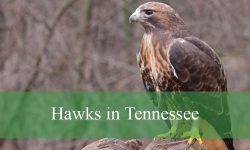In the shadowed forests, misty ridgelines, and hidden hollows of North Carolina, a solitary hunter glides silently through the underbrush. The bobcat (Lynx rufus)—North America’s most widespread wild feline—is rarely seen, yet its presence is deeply woven into the natural rhythms of the state. From the swamplands of the east to the granite slopes of the western Appalachians, this stealthy predator remains one of North Carolina’s most elusive yet vital carnivores.
For many people, bobcats exist only in whispered stories, distant rustlings, or cryptic paw prints etched in morning mud. But behind this mystery lies a creature of remarkable adaptability and ecological importance. Although the bobcat avoids the spotlight, a closer look into its world reveals a finely tuned predator with a secretive, resilient lifestyle that has enabled it to thrive in even the face of human expansion.
Understanding the bobcat’s biology, behavior, and role in the ecosystem offers more than just natural knowledge—it opens a window into the hidden wild that still exists in our midst, and encourages a deeper respect for the balance of North Carolina’s native landscapes.
Physical Characteristics and Identification

Bobcats are striking animals, with muscular, compact bodies built for stealth and strength. Adult bobcats typically range from 26 to 41 inches in length, with a distinctive “bobbed” tail that measures just 4 to 7 inches—a feature that gives the species its common name. Despite their modest size, they exude an aura of power and agility, weighing between 15 and 40 pounds, with males being significantly larger than females.
The bobcat’s coat is a masterclass in camouflage. Tawny to reddish-brown fur, adorned with black streaks and spots, allows it to vanish into the dappled light of forests or blend into the brushlands of the Piedmont. A white underbelly and black-tipped ears with short tufts add to their exotic and wild appearance. Their facial ruff, resembling a beard, enhances the cat’s broad facial features, giving it a somewhat regal, lynx-like countenance.
One of their most captivating features is their golden-yellow eyes, which shine with intensity and awareness. Beneath their silent presence is a body honed for ambush—broad paws, flexible spines, and powerful legs allow them to leap, climb, and pounce with astonishing efficiency.
The Wildcat of the Southeast
The bobcat is the only wild feline currently breeding in North Carolina, and it’s perfectly adapted to the Southeast’s wide range of habitats. A cousin to the Canada lynx, the bobcat diverged long ago and evolved to flourish in warmer climates and a broader array of ecosystems. Whereas the lynx depends heavily on snowshoe hares in northern forests, the bobcat thrives on a mixed diet and a broader habitat palette.
North Carolina’s bobcats represent one of the healthiest populations in the eastern United States. They’ve survived centuries of habitat loss, persecution, and ecological change through sheer adaptability. These cats can live in bottomland hardwood forests, upland pine woods, wetlands, and suburban edges, all without fundamentally altering their solitary and secretive way of life.
Despite their resemblance to large house cats at a glance, bobcats are wholly wild. Their teeth and jaw structure are built to crush bone, and their physiology supports long stalking sessions and explosive chases. Every aspect of their build serves a purpose, forged by evolution rather than human interference.
Habitat and Range in North Carolina
Bobcats have managed to occupy every region of North Carolina, from the salt marshes of the coast to the dense, fog-shrouded forests of the Great Smoky Mountains. They tend to favor areas with dense vegetation, which provides cover for stalking and shelter for resting during the day. These areas also offer numerous escape routes should danger arise, making them ideal territory for this elusive hunter.
In the mountainous west, they are often found navigating rugged slopes, laurel thickets, and forested ridges. The Piedmont region, with its patchwork of farmland, young forests, and overgrown pastures, also supports healthy populations. Even the coastal plain harbors bobcats in swamp forests and pine flatwoods, where prey is abundant and cover is plentiful.
Bobcats are highly territorial, with males commanding ranges of up to 30 square miles, while females generally maintain smaller ranges. These territories often overlap slightly, especially between opposite sexes. Bobcats communicate their boundaries through scent marking, scrapes, and vocalizations, although the latter is rare.
Behavior and Daily Activity
By nature, bobcats are solitary, stealthy, and largely nocturnal. However, they are also crepuscular, meaning their peak activity often occurs during the twilight hours of dawn and dusk. Their low profile during the day and preference for concealed movement make them incredibly difficult to observe in the wild.
Bobcats are deliberate in how they navigate their environment. Rather than ranging widely in search of prey, they often patrol well-worn paths within their territory, using their keen senses to detect even the faintest sign of movement. They move with the silence of a ghost—every step placed with care, every twitch of the ear a calculation.
Though solitary, bobcats do display complex behaviors during the mating season, including vocalizations like yowling, growling, and caterwauling. Otherwise, interactions between individuals are rare. Mothers will occasionally share dens with their kittens for several months, but beyond that, bobcats lead largely independent lives.
Hunting and Diet
Bobcats are carnivorous generalists, meaning they hunt a wide variety of animals depending on local availability. Their most common prey includes rabbits, mice, squirrels, wood rats, birds, and reptiles, but they have been documented taking young deer, especially in winter when other food sources become scarce.
Their hunting technique is rooted in ambush and ambivalence. A bobcat may remain perfectly still for extended periods, hidden by foliage, waiting for an unsuspecting animal to wander within striking range. When the moment comes, it unleashes an explosive leap—sometimes over 10 feet in a single bound—to deliver a precise killing bite.
One fascinating aspect of their behavior is the tendency to cache food. After a successful hunt, a bobcat may cover its kill with leaves, snow, or dirt, returning later to feed. This demonstrates their instinct for conservation and preparation, especially in unpredictable weather or during lean months.
Reproduction and Family Life
The bobcat’s reproductive season typically begins in January or February, with breeding peaking in late winter. After a gestation of about 60 to 70 days, the female gives birth—usually in April or May—to a litter of 2 to 4 kittens in a well-hidden den.
Dens are typically located in rock crevices, hollow logs, dense underbrush, or abandoned burrows. The female will often move her kittens between multiple den sites to avoid drawing attention from predators such as coyotes or large birds of prey. The kittens are born blind, helpless, and weighing just 10–12 ounces.
Over the summer months, the kittens grow rapidly under the watchful eye of their mother. She feeds them regurgitated meat at first, then brings back small animals for them to practice hunting. By early fall, many juveniles are venturing out on their own, though some may remain with the mother until the next breeding season.
Ecological Role and Importance
Bobcats serve as keystone predators in North Carolina’s wild ecosystems. By controlling populations of rabbits, rodents, and other small mammals, they prevent overgrazing, promote healthy plant regeneration, and maintain balance across food webs.
They also serve as a natural check on invasive species like feral pigs and nutria, especially in eastern North Carolina where wetlands dominate. In this way, bobcats contribute to the health of not just animal communities but also plant life and soil structure.
Moreover, their very presence shapes the behavior of other species—a concept known as the “landscape of fear.” Small mammals adjust their foraging behavior to avoid becoming prey, which further spreads the positive impact of bobcats through the ecosystem.
Human Interaction and Misconceptions
While bobcats tend to avoid humans, habitat fragmentation, road construction, and suburban sprawl have increased the likelihood of interactions. In most cases, these are harmless sightings, but they often spark unwarranted fear or confusion.
Contrary to common belief, bobcats rarely pose a threat to people or pets. While they are capable of killing small animals like chickens or rabbits, such incidents are isolated and preventable with proper enclosures. Bobcats will almost always retreat from confrontation, choosing escape over aggression.
North Carolina designates the bobcat as a regulated game species, meaning it may be hunted or trapped under controlled seasons and quotas. Wildlife officials track population trends closely, ensuring hunting does not jeopardize long-term sustainability.
Tracking and Identifying Signs
Even if you never see a bobcat, signs of its passage may be closer than you think. Tracks, which appear round with four toe pads and no claw marks, are often confused with domestic cat prints, though they’re noticeably larger—typically 1.5 to 2 inches in diameter.
You might also find scat, often containing fur, feathers, or small bones. Scratch marks on tree trunks or fence posts, and claw sharpenings on logs, are more subtle clues. For researchers and nature enthusiasts, trail cameras provide valuable, non-invasive glimpses into the world of bobcats, capturing footage of these cats on nightly patrols.
Fun Facts About Bobcats in North Carolina
Although bobcats are known for their preference for remote wilderness, they have surprisingly been recorded living within the city limits of urban areas like Charlotte, Durham, and Winston-Salem. These elusive felines manage to coexist undetected near human development, slipping through green corridors and wooded lots without drawing attention. Despite their proximity, actual sightings remain rare due to their secretive nature and nocturnal habits.
Unlike many other wild animals that follow migratory patterns, bobcats are year-round residents of their territories. They remain in the same home range throughout all seasons, simply adjusting their daily activity and movement to match shifts in prey behavior, temperature, and landscape conditions. This adaptability allows them to thrive in North Carolina’s dynamic environments, from hot summers to chilly mountain winters.
One of the more unusual physical traits of the bobcat is the length of its hind legs, which are noticeably longer than its front ones. This anatomical structure gives the animal a slightly arched posture when it walks and contributes to its powerful leaping ability. With this advantage, a bobcat can spring over ten feet in a single bound, a skill that makes it one of the most athletic and efficient ambush predators in the wild.
Conservation Status and Outlook
Thanks to healthy habitats, smart management, and public awareness, bobcats in North Carolina remain stable and secure. They are currently listed as a species of Least Concern by both the North Carolina Wildlife Resources Commission and international conservation bodies.
Still, ongoing threats such as road mortality, urbanization, and habitat loss are being closely monitored. Conservation groups continue to promote wildlife corridors, protected areas, and community education to ensure this symbol of the wild retains its foothold in North Carolina.
The bobcat’s success is a testament to the resilience of native wildlife, even in a rapidly changing world.
Conclusion: Embracing the Wild Close to Home
The bobcat reminds us that wildness still exists, even in the shadows of our backyards and beneath the leaves of forgotten trails. To live in North Carolina is to share space—often unknowingly—with a silent predator that asks only for solitude, shelter, and the chance to hunt as it always has.
By learning about and respecting these secretive felines, we take a step toward preserving the untamed soul of the Southeast. In a world where the wild is increasingly rare, the bobcat stands as a whisper from the forests, telling us the story of a landscape that still breathes.
FAQs About Bobcats in North Carolina
Are bobcats dangerous to humans?
Bobcats are generally not dangerous to humans. They are naturally shy and reclusive animals that prefer to avoid confrontation. While they may defend themselves if cornered or threatened, attacks on people are extremely rare. Most bobcats will flee at the first sign of human presence.
Can bobcats be found in urban or suburban areas?
Yes, bobcats have been recorded in suburban and even urban environments in North Carolina, including areas near cities like Raleigh, Charlotte, and Durham. However, they are rarely seen due to their nocturnal and secretive behavior. They often use greenbelts, wooded corridors, and creeks to move undetected through developed areas.
What do bobcats eat in North Carolina?
Bobcats in North Carolina primarily feed on small to medium-sized mammals such as rabbits, squirrels, mice, and voles. They also eat birds, reptiles, and occasionally larger prey like young deer. Their diet may vary seasonally depending on food availability.
How can I tell if a bobcat has been in my area?
Signs of a bobcat’s presence include round paw prints with four toe pads and no visible claw marks, scat containing fur or bones, scratch marks on trees, and remains of partially buried prey. Trail cameras are also useful for capturing images of these elusive cats.
Are bobcats protected in North Carolina?
Yes, bobcats are classified as a regulated game species in North Carolina. They can be legally hunted or trapped during specific seasons, but their populations are closely monitored by the North Carolina Wildlife Resources Commission to ensure sustainability.
How big are bobcats compared to domestic cats?
Bobcats are significantly larger than domestic cats. While house cats typically weigh between 8 to 12 pounds, adult bobcats weigh between 15 to 40 pounds. They also have a muscular build, longer legs, a broad face with a ruff, and a distinctive short “bobbed” tail.
Do bobcats make sounds?
Yes, bobcats are capable of making a variety of sounds, though they are usually silent. During mating season, they may produce yowls, growls, hisses, and screams that can sound alarming. Outside of this period, vocalizations are uncommon.
When are bobcats most active?
Bobcats are primarily crepuscular and nocturnal, meaning they are most active at dawn, dusk, and throughout the night. Their activity may shift based on prey movement, weather conditions, and human presence in the area.
Do bobcats pose a threat to pets or livestock?
In rare cases, bobcats may prey on small outdoor animals such as chickens, rabbits, or very small pets if left unattended. However, such incidents are uncommon and usually preventable with secure fencing, proper enclosures, and supervision of pets in vulnerable areas.
What should I do if I see a bobcat?
If you encounter a bobcat, remain calm and do not approach it. Make yourself appear larger by raising your arms, and make loud noises to scare it away if necessary. Never try to feed or corner the animal. Most bobcats will retreat quickly once they notice a human.






